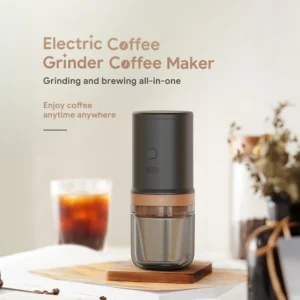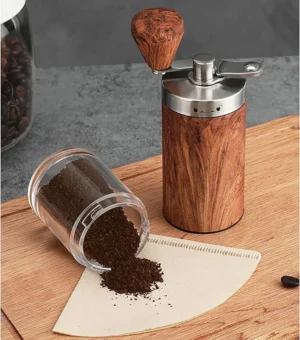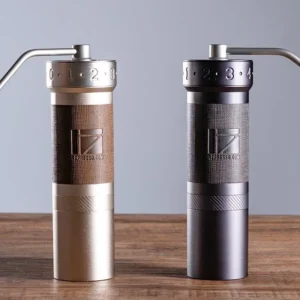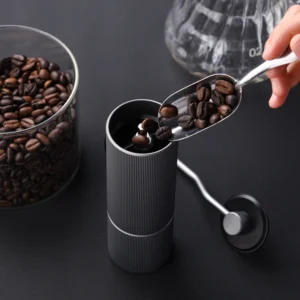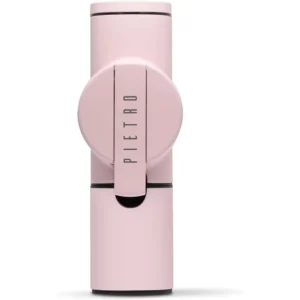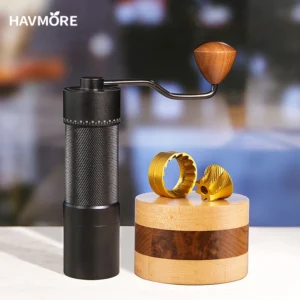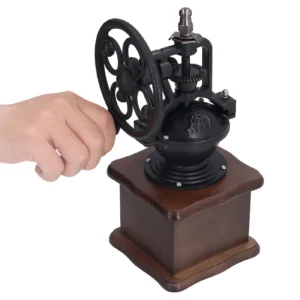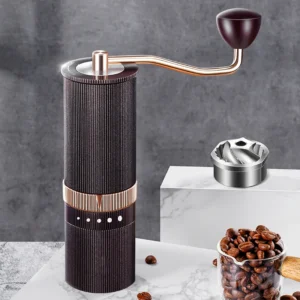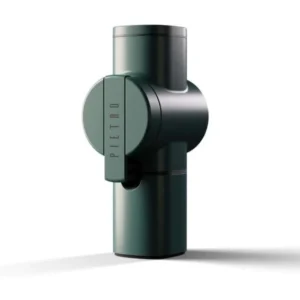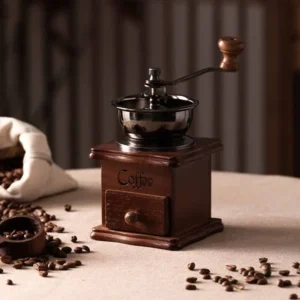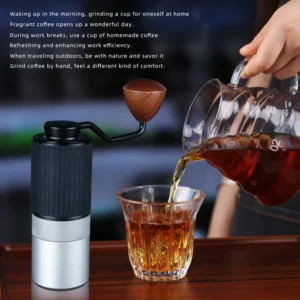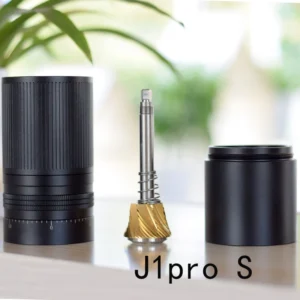Manual Coffee Mill Grinder
Get richer coffee flavor: grind beans fresh by hand. These manual burr grinders ensure consistent results for great coffee, at home or on your travels.
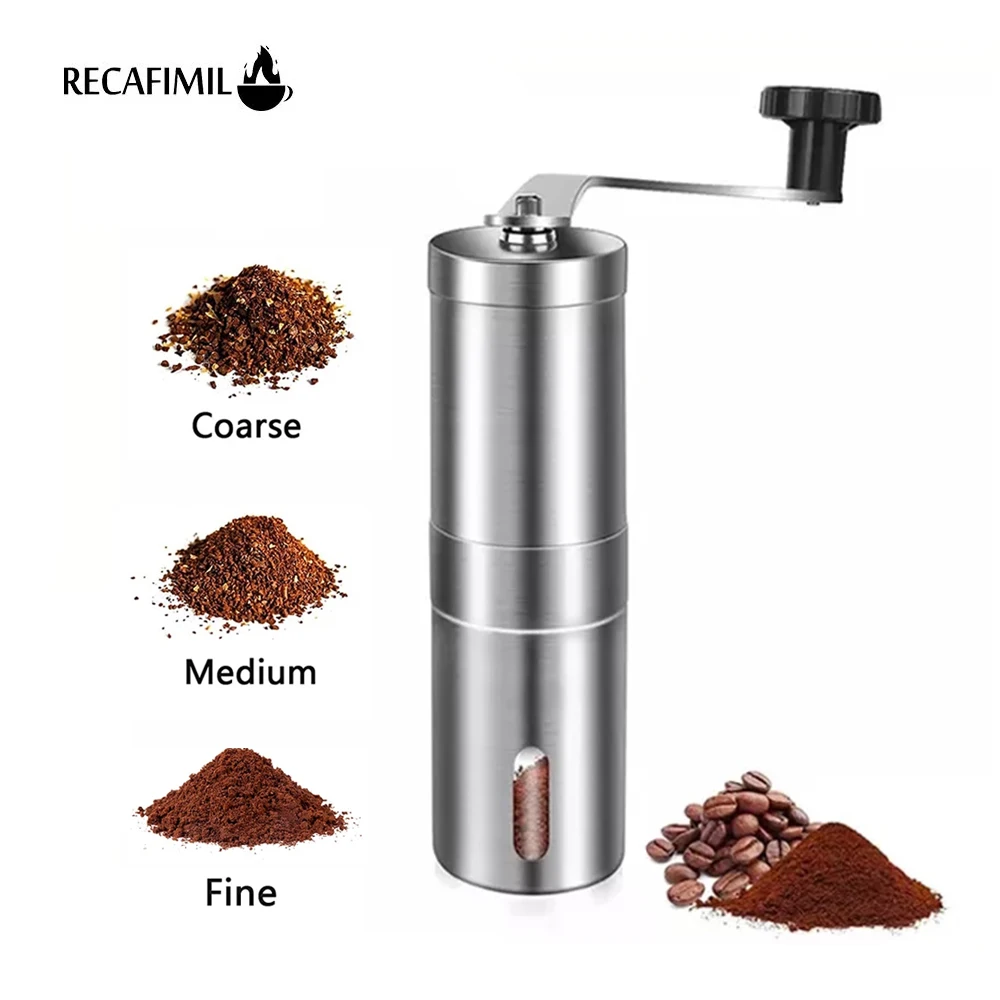
Showing 1–12 of 16 results
Manual Burr Mill, Manual Coffee Grinder Stainless Steel, Manual Coffee Mill Grinder, Mechanical Coffee Grinder
Price range: $127.26 through $130.32 Select options This product has multiple variants. The options may be chosen on the product pageHandheld Burr Grinder, Manual Coffee Mill Grinder, Travel Coffee Grinder
$191.45 Select options This product has multiple variants. The options may be chosen on the product pageCeramic Burr Coffee Grinder, Fine Adjustment Hand Grinder, Manual Coffee Bean Grinder, Manual Coffee Mill Grinder
Price range: $62.70 through $65.28 Select options This product has multiple variants. The options may be chosen on the product pageHand Crank Coffee Grinder, Manual Coffee Bean Grinder, Manual Coffee Grinder for Espresso, Manual Coffee Mill Grinder
$63.31 Select options This product has multiple variants. The options may be chosen on the product pageHand Burr Grinder, Manual Coffee Grinder Stainless Steel, Manual Coffee Mill Grinder, Travel Coffee Grinder
$775.30 Select options This product has multiple variants. The options may be chosen on the product pageCompact Coffee Mill, Handheld Coffee Grinder, Manual Coffee Mill Grinder, Travel Coffee Grinder
Price range: $193.79 through $194.44 Select options This product has multiple variants. The options may be chosen on the product pageHand Burr Grinder, Manual Coffee Bean Grinder, Manual Coffee Grinder Stainless Steel, Manual Coffee Mill Grinder
Price range: $179.35 through $281.38 Select options This product has multiple variants. The options may be chosen on the product pageHand Burr Grinder, Manual Coffee Grinder Stainless Steel, Manual Coffee Mill Grinder, Mechanical Coffee Grinder
$165.42 Select options This product has multiple variants. The options may be chosen on the product pageHand Crank Coffee Grinder, Manual Coffee Bean Grinder, Manual Coffee Mill Grinder
$1,161.51 Select options This product has multiple variants. The options may be chosen on the product pageHand Burr Grinder, Hand Crank Coffee Grinder, Manual Coffee Bean Grinder, Manual Coffee Mill Grinder
$69.54 Select options This product has multiple variants. The options may be chosen on the product page
Showing 1–12 of 16 results
Understanding the Essence of Manual Coffee Grinders
Manual coffee mill grinders represent the perfect intersection of tradition and precision in coffee preparation. These hand-powered devices feature carefully engineered burr mechanisms designed specifically for transforming whole coffee beans into grounds of various consistencies. Unlike their electric counterparts, manual grinders put you in complete control of the grinding process, creating an intimate connection between brewer and bean that many coffee enthusiasts find irreplaceable.
The difference between pre-ground coffee and freshly ground beans is nothing short of transformative. When coffee beans are ground, they immediately begin releasing volatile compounds responsible for aroma and flavor. Manual grinding preserves these delicate elements by minimizing heat generation and allowing you to grind exactly what you need, when you need it. This fundamental approach to coffee preparation has stood the test of time precisely because it delivers superior results.
Why Manual Matters: Manual coffee grinders offer unparalleled portability, precision control over grind size, and a tactile connection to the brewing process that electric models simply cannot match. The absence of motors means silent operation, making them perfect for early morning brewing without disturbing others.
Essential Components That Define Quality
Burr Set
The heart of any manual burr mill is its grinding mechanism. Premium grinders feature either conical or flat burrs, with conical being more common in hand grinders due to their efficiency. Materials matter tremendously here—ceramic burrs resist heat but may be more brittle, while steel burrs offer exceptional durability and precision.
* Look for burrs between 38-48mm in premium models
* Check for even, consistent cutting surfaces
* Consider how the material affects longevity and grind quality
Adjustment Mechanism
The ability to precisely control your grind size determines brewing versatility. Quality grinders offer either stepped systems (with distinct “clicks” between settings) or stepless designs allowing infinite adjustment.
* Premium models typically offer 15-40 distinct grind settings
* Consider the ease of repeating settings for consistent results
* Evaluate the mechanism’s stability during grinding
Hopper Design
The bean chamber affects both capacity and feeding consistency. Well-designed hoppers guide beans naturally into the burrs without jamming or requiring extra effort.
* Standard capacity ranges from 20-40g in portable models
* Look for designs that prevent “popcorning” (beans jumping around)
* Consider ease of loading and stability
Handle & Crank System
Ergonomics matter significantly when you’re providing the power. The handle length, material, and connection point all affect grinding efficiency and comfort.
* Longer handles provide better leverage
* Secure attachments prevent slipping during use
* Comfortable grip reduces hand fatigue
Grounds Collection
How grounds are captured impacts both cleanliness and static control. Quality grinders feature stable, easy-to-remove chambers that minimize mess.
* Look for secure connection between chamber and grinder body
* Consider transparency for monitoring progress
* Evaluate static control measures
Compelling Advantages of Hand Grinding
- Superior Grind Consistency: Quality manual coffee grinders often deliver more uniform particles than entry-level electric models, resulting in even extraction and balanced flavor.
- Go-Anywhere Portability: No cords, no batteries, no constraints—these compact tools fit easily in luggage, camping gear, or office drawers.
- Perfect Precision: Fine-tuned adjustments allow you to dial in the exact grind needed for everything from espresso to French press.
- Mindful Morning Ritual: The physical act of grinding creates a moment of focused preparation that many find meditative and rewarding.
- Built to Last: Simple mechanics with fewer failure points often mean decades of reliable service.
- Value Proposition: For the same price as an entry-level electric grinder, you can own a premium manual model with superior burrs.
- Whisper-Quiet Operation: Grind beans at dawn without waking the household.
| Feature | Manual Advantage | Electric Alternative |
|---|---|---|
| Portability | Complete mobility, no power needed | Tethered to outlets or batteries |
| Noise Level | Near silent | Often loud/disruptive |
| Heat Generation | Minimal | Can be significant |
| Grind Consistency | Superior in mid-range price points | Requires significant investment for similar quality |
| Lifespan | Often 10+ years | Typically 2-5 years |
| Connection to Process | Direct physical engagement | More removed experience |
Choosing the Perfect Manual Grinder for Your Brewing Style
The ideal manual grinder aligns with your specific brewing methods and lifestyle needs. Espresso enthusiasts require a model with exceptional stability and fine adjustment capability, while travelers might prioritize durability and compactness over maximum precision.
| Brewing Method | Ideal Grind | Recommended Grinder Features |
|---|---|---|
| Espresso | Very fine | Robust adjustment mechanism, stable burrs |
| Pour Over | Medium-fine | Precise stepped settings, consistent output |
| French Press | Coarse | Even particle distribution, larger capacity |
| AeroPress | Fine to medium | Versatile adjustment range, portability |
Consider your primary use scenario. Will you mainly grind at home, or do you need something for travel? A portable coffee grinder might sacrifice some capacity for compactness, while home-focused models might offer larger hoppers and more stable bases. Your grinding frequency also matters—occasional users might be satisfied with simpler models, while daily grinders should invest in superior ergonomics and materials.
At Savor Suite, we believe the quality of your burr set should be the highest priority, as this is the component most directly responsible for grind consistency and flavor clarity.
Proper Usage and Maintenance
Effective Grinding Technique
- Hold the grinder body firmly with your non-dominant hand
- Turn the handle with your dominant hand using smooth, consistent motions
- Maintain vertical orientation for most consistent results
- Use a table surface for stability when grinding for espresso
Pro Tip: Count your rotations to help replicate your perfect grind from session to session. Most quality beans require 30-45 seconds of grinding for a single cup.
Simple Maintenance
- Brush out grounds after each use with a soft brush
- Every 1-2 weeks, disassemble and clean thoroughly
- Check burrs regularly for signs of wear or misalignment
- Store in a dry environment to prevent unnecessary stress on components
The hand crank coffee grinder requires minimal but consistent care. Pay special attention to the burrs and adjustment mechanism, as small particles can affect performance over time. A well-maintained grinder will reward you with years of perfect grounds and exceptional coffee.
FAQs and Enhancing Your Coffee Journey
Q: How long does it really take to grind coffee manually?
A: For a single cup (about 15g), expect 30-60 seconds of grinding. The finer the grind, the more time required. While this is longer than electric grinding, many users find the ritual becomes a valued part of their coffee routine.
Q: Can manual grinders really handle espresso grinding?
A: High-quality manual coffee burr grinders absolutely can produce consistent espresso grounds. Look for models with stable burrs and precise adjustment mechanisms designed specifically for fine grinding capabilities.
Q: What’s the advantage of a ceramic burr coffee grinder?
A: Ceramic burrs transfer less heat to coffee grounds and remain sharp longer than some steel alternatives. They’re ideal for those seeking maximum flavor preservation, though they may be slightly more fragile.
Q: How do I know if my grind size is correct?
A: The ultimate test is in the cup. Proper extraction time and flavor clarity indicate correct grinding. For pour-over, aim for 2-3 minute brew times. If your coffee tastes bitter, try a coarser grind; if it tastes sour or weak, go finer.
To maximize your manual grinding experience, consider investing in complementary tools like precision scales for consistent dosing and airtight containers for bean storage. Fresh, quality beans make all the difference—even the finest grinder cannot improve stale coffee. At Savor Suite, we believe the manual coffee bean grinder represents not just a tool, but a gateway to deeper appreciation of coffee’s remarkable complexity.


